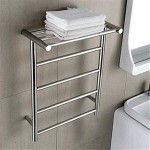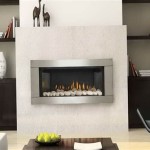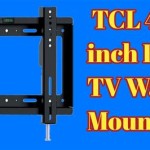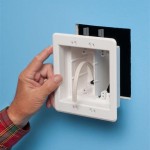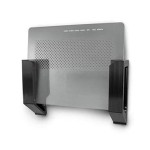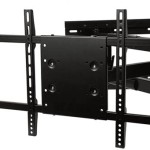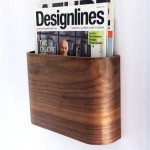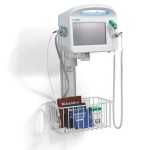How To Mount a Flag on a Wall
Displaying a flag on a wall is a common way to show patriotism, exhibit organizational affiliation, or simply add a decorative element to a room. The method of mounting a flag depends on several factors, including the size and weight of the flag, the material of the wall, and the desired aesthetic. Careful planning and execution are crucial to ensure the flag is securely mounted and remains in good condition.
Before beginning the mounting process, gather all necessary tools and materials. This preparation will streamline the process and minimize potential delays. The specific tools and materials required will vary depending on the chosen mounting method, but generally include a measuring tape, a level, a drill (if needed), appropriate fasteners (screws, nails, or adhesives), and a pencil for marking. Additionally, consider the type of wall surface. Drywall, plaster, wood, and concrete each require different mounting techniques and hardware to achieve a secure hold.
Choosing the Right Mounting Method
Selecting the appropriate mounting method is the first critical step. Several options exist, each with its own advantages and disadvantages. The primary considerations for selecting a method include the flag's weight and size, the wall’s material, and the desired appearance. Common mounting methods include using flagpoles with brackets, direct mounting with tacks or adhesive strips, and framing the flag for display.
Using a flagpole with brackets provides a traditional and visually appealing method. This involves attaching metal or plastic brackets to the wall and inserting a short flagpole into the brackets. This method is particularly suitable for larger flags, as the flagpole provides support and prevents the flag from sagging. The brackets can be positioned to display the flag horizontally or at an angle, allowing for flexibility in presentation. The flagpole chosen should be appropriately sized for the flag's dimensions; a pole that is too short will look disproportionate, while a pole that is too long may be unwieldy. The brackets must be securely attached to the wall using screws that are appropriate for the wall material. For drywall, it is recommended to use wall anchors for added support. For wood, screws can be directly inserted into the studs. For concrete, specialized concrete screws and a hammer drill are required.
Direct mounting, using tacks, nails, or adhesive strips, is a simpler and less expensive option suitable for smaller, lightweight flags. This involves directly attaching the flag to the wall using the chosen fasteners. Tacks are suitable for fabrics that can easily be pierced, while nails may be needed for thicker materials. Adhesive strips offer a damage-free alternative, but their holding power is limited. It is essential to consider the weight of the flag when selecting adhesive strips to ensure they can adequately support it. This method is less visually prominent than using a flagpole and brackets, as the fasteners are typically concealed within the flag's fabric. When using tacks or nails, carefully position them along the flag's edges to ensure a secure and even hold. When using adhesive strips, clean the wall surface thoroughly before applying the strips to ensure optimal adhesion.
Framing the flag is an excellent option for preserving and displaying a flag as a decorative art piece. This involves encasing the flag within a picture frame, protecting it from dust, damage, and fading. Framing is particularly suitable for historical or sentimental flags, as it helps to preserve their condition. The frame should be appropriately sized to accommodate the flag, and the flag should be carefully positioned within the frame to prevent wrinkles or folds. Acid-free materials should be used to prevent damage to the flag over time. A custom frame shop can provide professional framing services, ensuring the flag is properly mounted and protected within the frame.
Preparing the Wall Surface
Proper preparation of the wall surface is crucial for ensuring a secure and lasting mount. This involves cleaning the wall, identifying the wall material, and marking the desired location for the flag. A clean surface allows for better adhesion of adhesives or a secure grip for screws and nails. Identifying the wall material ensures the correct type of fasteners are used. Accurate marking ensures the flag is positioned correctly and evenly.
Before mounting anything, clean the wall surface thoroughly. Dust, dirt, and grease can interfere with adhesion and compromise the integrity of the mount. Use a damp cloth or a mild cleaning solution to remove any surface contaminants. Allow the wall to dry completely before proceeding with the mounting process. This is particularly important when using adhesive strips, as moisture can significantly reduce their holding power.
Identifying the wall material is essential for selecting the appropriate fasteners. Drywall, plaster, wood, and concrete each require different mounting techniques and hardware. Drywall and plaster are relatively fragile and require the use of wall anchors to provide adequate support. Wood is a more solid material and can typically support screws directly. Concrete is the most challenging material and requires specialized concrete screws and a hammer drill to penetrate its surface. Attempting to use the wrong type of fasteners can result in a weak or unstable mount, or even damage to the wall itself. If uncertain about the wall material, consult a professional or refer to online resources for guidance.
Accurately marking the desired location for the flag is crucial for ensuring it is positioned correctly and evenly. Use a measuring tape and a level to determine the precise location for the mounting hardware. Mark the location with a pencil. Double-check the measurements to ensure accuracy. If using multiple mounting points, use a level to ensure they are aligned horizontally and vertically. A slight misalignment can result in a crooked or uneven display.
Mounting the Flag Securely
The final step involves mounting the flag securely to the wall using the chosen method and hardware. This requires careful attention to detail and adherence to the manufacturer's instructions for the specific fasteners being used. Ensure the flag is straight, level, and securely attached to the wall before considering the job complete. Periodically inspect the mounting hardware to ensure it remains secure over time.
When using a flagpole and brackets, attach the brackets to the wall using appropriate screws and wall anchors (if needed). Ensure the brackets are securely fastened and can support the weight of the flagpole and flag. Insert the flagpole into the brackets and adjust the flag to the desired position. Secure the flag to the flagpole using clips or ties. Inspect the installation to ensure the flag is straight, level, and securely mounted. Periodically check the brackets and screws to ensure they remain tight and secure.
When using direct mounting with tacks, nails, or adhesive strips, carefully position the flag on the wall and attach it using the chosen fasteners. Ensure the fasteners are evenly spaced and securely attached to the wall. When using tacks or nails, insert them into the fabric along the flag's edges. When using adhesive strips, apply them to the back of the flag and press firmly against the wall. Inspect the installation to ensure the flag is straight, level, and securely mounted. Periodically check the fasteners to ensure they remain securely attached.
When framing the flag, carefully position the flag within the frame, ensuring it is straight and free of wrinkles or folds. Secure the flag within the frame using acid-free materials to prevent damage over time. Hang the framed flag on the wall using appropriate picture-hanging hardware. Ensure the hardware is securely attached to the wall and can support the weight of the framed flag. Inspect the installation to ensure the framed flag is straight, level, and securely mounted. Periodically check the hanging hardware to ensure it remains secure.
Following these guidelines will help ensure a flag is mounted securely and attractively on a wall. Remember to prioritize careful planning, proper surface preparation, and the selection of appropriate mounting hardware. This will result in a display that honors the flag and enhances the aesthetic of the space.

3 Ways To Hang The American Flag On A Wall Wikihow

3 Ways To Hang The American Flag On A Wall Wikihow

3 Ways To Hang The American Flag On A Wall Wikihow

Wall Mount Flag Holder With 5 Flags

American Texas Flags How To Hang A Flag

Titan Outrigger Wall Mounted Flagpole Kit Farm

Tips For Ing Durable Wall Mounted Flagpoles

Orion 6 Premium Wall Mounted Flagpole

Wall Mount American Flag

2 5 X 4 American Flag Kit 100 Made In The Usa

